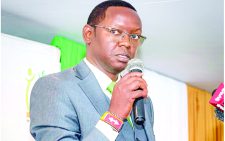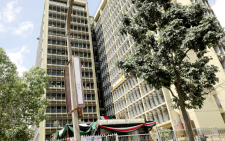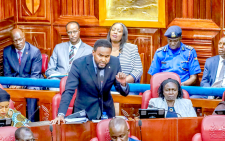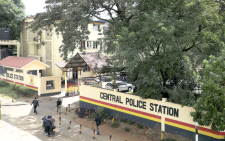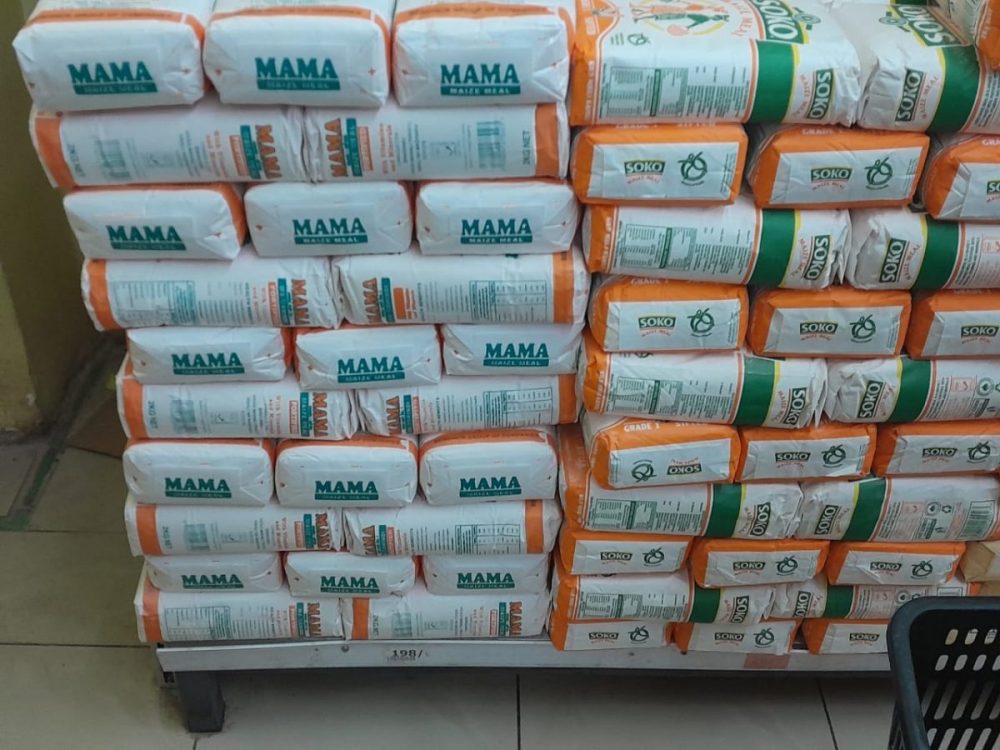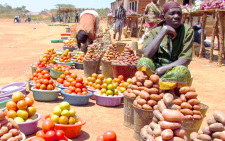Farmers embrace climate literacy to fight global warming
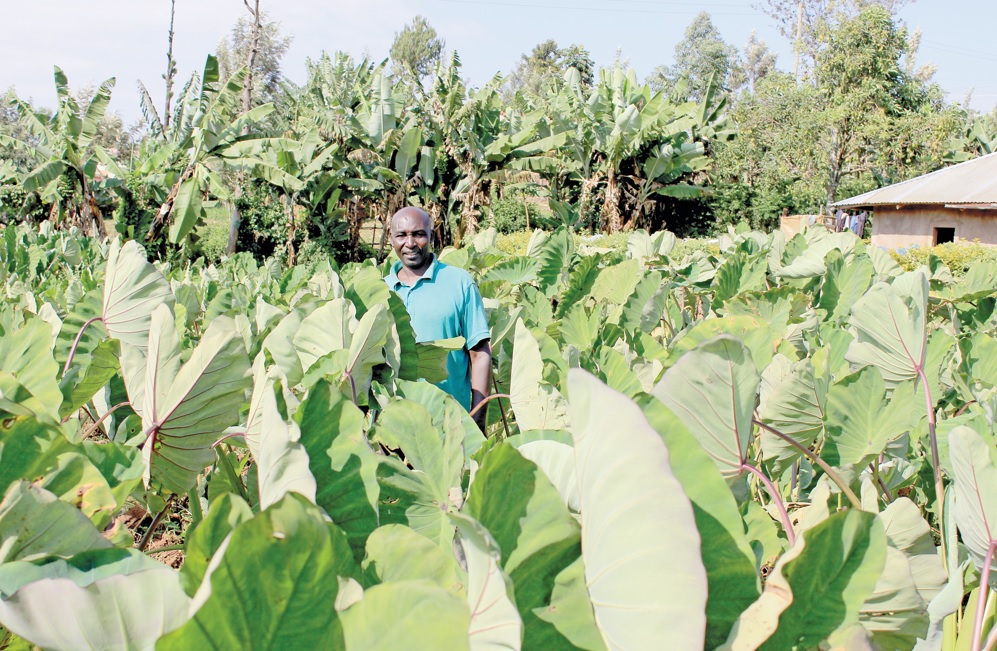
James Nyagwoka, a small-scale farmer in Kisii County never went beyond lower primary school because his poor parents could not afford to feed the family and pay their school fees.
At 17, he left his home and got employed as a labourer by a family in Tigania, Meru County, where his duties, included working in the farm, where one of the crops grown was yam.
The father of five returned to Kisii aged 25 and ventured into carpentry, and it was not paying, but the little he earned he purchased 200 stalks of yam.
“I started small, but now I have a seven-acre farm of yam,” he says proudly about his farming in which he applies organic manure from his chicken, cows, goats, and sheep instead of chemical fertilisers that have side effects, such as turning soils acidic. He also practices intercropping.
Changing patterns
“I plant crops, such as sukumawiki (kales), managu (African nightshade) and saga (spiderwhisp) between the yams to supplement my family’s nutrition,” he says.
Yet, he has had to grapple with the challenge of not being able to predict when to plant because of changing patterns of the rains.
“We had more than three streams of water, but they started drying up slowly until they disappeared. I soon started hearing about climate change and its effect on the rains and drying of rivers. It is then that I took the initiative in cutting down all the trees near the streams, “Nyagwoka says.
The United Nations (UN) defines climate change as the long-term shifts in temperatures and weather patterns.
“Yams take a shorter time to get ready, require less acreage and are disease and drought resistant compared to crops, such as maize. They can address food in the country and Africa,” he says.
Nyagwoka is among a section of small-scale farmers in Kenya and across Africa who may be academically illiterate and poor, but are climate change literate, underlining the task facing the elites who participated in the UN Climate Change Conference (COP27), which ended on November 20, 2022 in Sharm el-Sheikh, Egypt, if Africans are to mitigate effects of global warming in the continent.
“COP27 took place not far from Mount Sinai, a site that is central to many faiths and to the story of Moses, or Musa. It’s fitting. Climate chaos is a crisis of biblical proportions. The signs are everywhere. Instead of a burning bush, we face a burning planet,” António Guterres, the UN Secretary-General, said during the conference.
ReliefWeb, a humanitarian information service by the United Nations Office for the Coordination of Humanitarian Affairs (OCHA), defines climate change literacy as understanding the human causes of climate change and its potential impact on the world.
“Without it, people will be less able to adapt to climate change impacts, including projected adverse economic and environmental impacts and potential opportunities,” it says.
Drought and hunger
The UN says effects of climate change, include hotter temperatures, frequent and more severe storms, increased drought, a warming, rising ocean, loss of species, food scarcity, more health risks, poverty and displacement.
They are already being witnessed across the continent from the drought and hunger presently ravaging the Horn of Africa, including Kenya, to the floods in Southern Africa countries.
There are signs of the effects of climate change in the two counties of Kisii and Nyamira.
Henry Sese, the Kisii County Director of Meteorology, says the region used to receive heavy rainfall in April, October and November.
“There is a noticeable rise temperature, droughts are frequent with intermittent but excessive rains accompanied by floods and landslides due to global warming,” says Sese.
He says different species of bids, insects and plants have disappeared to be replaced by invasive counterparts like army worms and locusts, which destroys crops, with new diseases becoming common,” he says.
Evans Moseti, a farmer, has been forced to embrace smart climate agriculture.
“I noticed from 2010 a sharp drop water levels and I decided to cut down the eucalyptus trees near the catchment areas,” says Evans Moseti, a father of two,” I ventured into bamboo farming on my five-acre piece of land,” he says.
He invested Sh5,000 in a tree nursery, majorly bamboo and other indigenous trees.
“It became a good source of revenue with my bamboo farming and tree nursery fetching me up to Sh100,000 on a good year,” he says, adding, “Besides the bamboo controlling soil erosion and reducing pollution up to 35 per cent carbon dioxide in the climate and deliver more oxygen.”
He says bamboo, which takes three years to mature with a single stem producing more than 2,000 seedlings, can be used as firewood, fodder for animals, used for making household items, construction materials besides improving nature’s beauty.
To promote afforestation, in partnership with the Nyamira County Government and Kenya Forest Service (KFS) Moseti has been enlightening community on the importance of environmental conservation, the side effects of planting eucalyptus along river banks and donating seedlings to farmers donating seedling to farmers.
Community participation
Anne Omwoyo, the Kisii County Director of Climate, says low public awareness on climate change, limited finances, inadequate data and small number of metrological stations poses a major challenge.
She says the county has a Climate Change Framework and Policy in place since the Climate Change Policy mainstreaming was done in 2019 and the Climate Change Act enacted in 2021.
They have devolved climate finance to the county and ward levels complete with established Climate Committees in the two levels to ensure their programmes reach the community at the ward level. “Every ward is different in terms of climate, the reason we have a committee in each ward,” she says, “We are sensitising our people on climate change in collaboration with non-state actors,” she offers.
Under the County Climate Change Action Plan, in conjunction with KFS, they encourage communities to engage in afforestation, plant resistant crops, such as finger millet and sorghum, which are resistant to climate change. They also supply tree seedlings to farmers, and encourage them to engage in smart farming and conserve water.
Under the Kisii County Climate Change Fund they intend to allocate two per cent of the budget to programmes on climate change.


